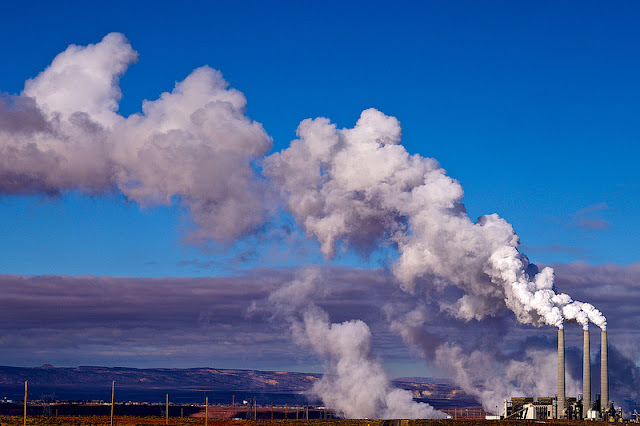Greenhouse gases are gases that can
trap heat. Carbon dioxide,
methane, and water vapour are the most important greenhouse gases. The
atmospheric concentration of a greenhouse gas is a measure of the abundance of
that gas in air, usually defined in terms of the proportion of the total volume
that it accounts for. Nowadays, global average concentrations of various
atmospheric greenhouse gases are continuing to increase, leading to a positive radiative forcing of climate and an expected warming of surface
temperatures.
Various objects in
nature show the so-called self-similarity or fractal property. In general,
fractal properties may be observed in the time series of the dynamics of
complex systems. Climate change can also be interpreted from the view of
fractals. A change of fractality may be observed when the climate changes.
Wavelet methods are
useful for the analysis of complex non-stationary time series. The wavelet
transform allows good multifractal analysis to be performed. In this paper, to
study the relation between the atmospheric CO2 concentration
and the climate indices, the researchers investigated the change of fractal
behavior of the CO2, the carbon isotope ratio (δ13C) of
atmospheric CO2, the Southern Oscillation Index (SOI), the Pacific
Decadal Oscillation (PDO), and the North Atlantic Oscillation (NAO) indices
using the multifractal analysis.
The SOI, Niño3.4,
PDO, NAO indices, and global mean surface air temperature anomalies provided by
NOAA’s Climate Prediction Center, USA (CPC) were used. Atmospheric
CO2 concentrations (ppm) derived from in situ air measurements at Mauna Loa, Observatory, Hawaii was
used. Monthly atmospheric 13C concentrations (per mil) in CO2
derived from flask air samples at Mauna Loa Observatory was used. Annual mean
growth rate of CO2 for Mauna Loa obtained from NOAA was used.
The results showed
that when the atmospheric CO2 growth rate was large, the
multifractality of CO2, δ13C in CO2, ENSO (SOI and Niño3.4), and NAO was large
and the changes were large from the change of fractality. The changes of CO2 and
ENSO were closely related and the influence of the CO2on the ENSO
was strong from the change in fractality and wavelet coherence. When the El
Niño occurred, the CO2 growth rate was large. The CO2 related
to PDO, NAO, and global temperature from the change in fractality and wavelet
coherence. Especially, the changes of CO2 and global
temperature were closely related. When the global warming hiatus occurred, the
multifractality of the global temperature was weaker than that of CO2 and
the change of the global temperature was stable.
These findings will
contribute to the research of the relation between the atmospheric CO2and
climate change.
Article by Fumio Maruyama, from Matsumoto
University, Matsumoto, Japan.
Full access: http://t.cn/E5QMftD
Image by francesco.pandolfi, from
Flickr-cc.

评论
发表评论